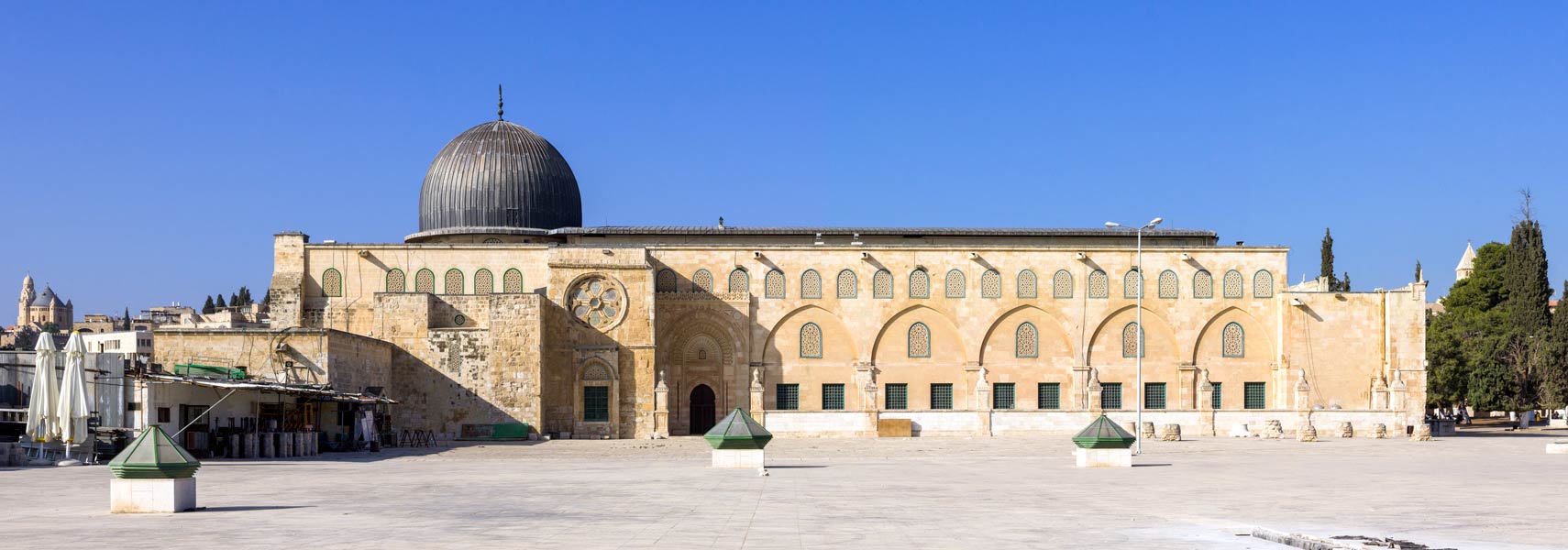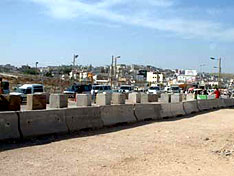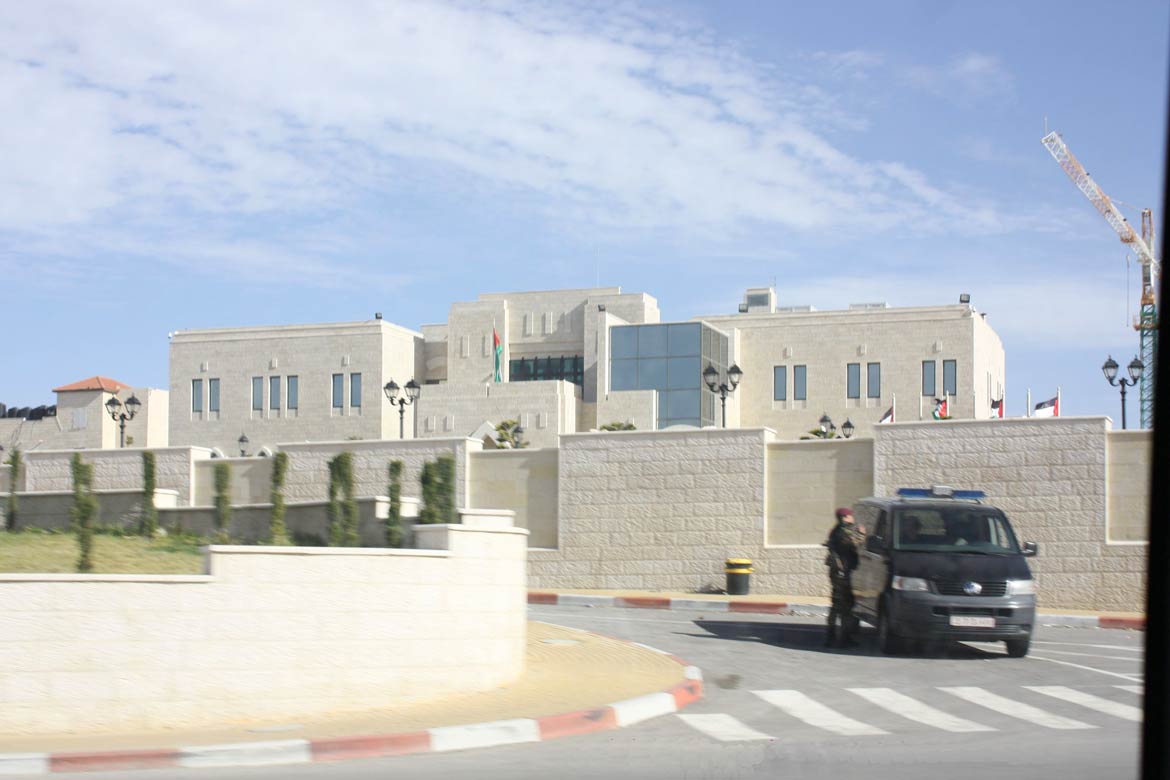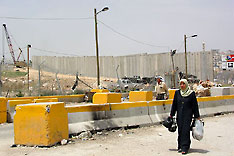| Home |
___ State of Palestine :: Palestinian territories |
 Al-Aqsa Mosque on the Temple Mount in the Israeli occupied part of Jerusalem in the Old City of East Jerusalem. The Al-Aqsa Mosque is considered to be the third holiest site in Islam after Mecca and Medina. Image: Andrew Shiva |
|
Palestinian territories, a virtual guide to Gaza and the West Bank. "Palestinian territories" and "occupied Palestinian territories" (OPT or oPt) refers to the territories of the West Bank (including East Jerusalem) and the Gaza Strip, which are occupied or otherwise under the control of Israel. The State of Palestine is a de jure sovereign state in the Middle East consisting of the West Bank and the Gaza Strip. The "State of Palestine" is officially recognized by the United Nations as a Non-Member Observer State, the status was granted on 29 November 2012. The state's designated capital is East Jerusalem, however the administrative center is located in the city of Ramallah (West Bank). The State of Palestine is recognized by more than 130 countries worldwide, but not by France, the United Kingdom, the United States, Australia, Canada, Germany, Italy, Japan, Mexico, Netherlands, Republic of Korea, Spain and Switzerland. The estimated population in mid-2016 in Palestine is about 4.81 million people. Gaza Strip A strip of land with a coastline at the Mediterranean Sea, the small self-governing Palestinian territory is bordered by Egypt (Rafah border crossing) and by Israel. 1.9 million Palestinian Arabs live in Gaza Strip (est. 2017), Gaza City is the largest city and the administrative center of the Gaza Governorate. Spoken languages are Arabic, Hebrew (spoken by many Palestinians), English (widely understood). Main religion is Islam, 98.0 - 99.0%. (predominantly Sunni). West Bank The West Bank is a landlocked rugged territory in the Mediterranean Region, west of Jordan, on three sides surrounded by Israel. The West Bank occupies an area of 5,860 km², making it slightly larger than twice the size of Luxembourg, or slightly smaller than the US state of Delaware. The territory has a population of 3 million people (est. 2017), about 390,000 Israeli settlers live in the West Bank (2016). Spoken languages are Arabic, Hebrew (spoken by Israeli settlers and many Palestinians), English (widely understood). Main religions are Islam 80-85% (predominantly Sunni), Jewish 12-14%, Christian 1-2.5% (mainly Greek Orthodox). In December 2016 the United Nations Security Council voted 14 to 0 to condemn Israeli settlements in the West Bank. The United States, which often vetoes resolutions critical of Israel, abstained and allowed the resolution to pass. The council also called upon all States to distinguish, in their relevant dealings, between the territory of the State of Israel and the territories occupied since 1967. [1] Despite that call, in December 2017, sitting US President Donald Trump recognized unilateral Jerusalem as the capital of Israel - and set off an avalanche of international criticism and protests. The State of Palestine is a member of the League of Arab States. |
Palestinian territories: Gaza Strip and West Banks |
Country Profile |
|
Following Palestinian leader Yassir ARAFAT's death in late 2004 and the subsequent election of Mahmud ABBAS (head of the Fatah political faction) as PA president, Israel and the Palestinians agreed to move the peace process forward. Israel in late 2005 unilaterally withdrew all of its settlers and soldiers, dismantled its military facilities in the Gaza Strip, and redeployed its military from several West Bank settlements, but it continues to control maritime, airspace, and other access. In early 2006, the Islamic Resistance Movement, HAMAS, won the Palestinian Legislative Council election and took control of the PA government. Attempts to form a unity government failed, and violent clashes between Fatah and HAMAS supporters ensued, culminating in HAMAS's violent seizure of all military and governmental institutions in the Gaza Strip. Fatah and HAMAS have made several attempts at reconciliation, but the factions have been unable to implement details on governance and security. |
Official Name: Palestinian territories: Gaza Strip (Qita Ghazzah), West Banks ISO Country Code: ps Time: Actual Time: Fri-Apr-26 12:34 Local Time = UTC +2h Daylight Saving Time (DST) 1 April - 9 Oktober 2005 (UTC +3). Country Calling Code: +970 Capital City: claimed East Jerusalem (Al Quds - Bir Salem) Other Cities: Gaza strip: Gaza City; West Bank: Bethlehem, Hebron (Al-Khalil), Jericho, Nablus, Nazareth, Ramallah. Government: Limited civilian jurisdiction by the Palestinian National Authority, the interim administrative organization that nominally governs parts of the Palestinian territories of Gaza strip and West Bank. Geography: Location: Middle East Area: Gaza 360 km², West Bank 5,860 km² Terrain: Gaza, sand- and dune-covered coastal plain; West Bank, mostly rugged dissected upland, some vegetation in west. Climate: A Mediterranean climate prevails in Palestine. Summers are hot and dry. Winters are rainy and cold. People: Nationality: Palestinian Population: 4.2 million (2012) Ethnic Groups: Palestinian Arab, Jewish Religions: Muslim 75% (predominantly Sunni), Jewish 17%, Christian and other 8% Languages: Arabic, Hebrew (spoken by Israeli settlers and many Palestinians), English (widely understood) Literacy: NA Natural resources: arable land, natural gas. Agriculture products: olives, citrus, vegetables; beef, dairy products Industries: generally small family businesses that produce cement, textiles, soap, olive-wood carvings, and mother-of-pearl souvenirs. Exports partners: Israel, Jordan Imports partners: Israel, Jordan Currency: New Israeli Shekel (ILS); Jordanian Dinar (JOD); US Dollar  Qalandia Checkpoint |
 Mukataa, the Palestinian Presidential Compound in Ramallah, West Bank. Image: PalestinianLiberator Political system The Palestinian government is the government of the State of Palestine. The ruling power was split into two separate administrations. The first was the Fatah-dominated Palestinian government of 2013, which rules the West Bank areas A and B and is generally referred to as the Palestinian Authority. The other was the Hamas government of 2012, which was ruling the Gaza Strip. On September 25, 2014, Hamas agreed to let the Palestinian Authority resume control over the Gaza Strip and its border crossings with Egypt and Israel. Official Sites of the Palestinian AuthoritiesNote: External links will open in a new browser window.Palestinian Government - Office of the Prime Minister Official website of the Ministry. Palestine Ministry Of Information Provides information on Palestine from the Palestinian point of view. Palestinian Ministry of Foreign Affairs Official site of the Palestinian Ministry of Foreign Affairs (in Arabic). Diplomatic Missions Permanent Observer Mission of Palestine to the UN Provides information on issues related to Palestine and the United Nations, information on Palestinian affairs including, historical pieces and documents of the Middle East peace process. Text of the "unofficial" peace agreement of the Geneva Initiative drafted by moderate Israeli and Palestinian leaders to resolve the Israeli-Palestinian conflict. Maps Detailed Map of Israel, Westbank and Gaza Strip. Satellite view of Palestine region. Political Map of of North Africa, the Arabian Peninsula and the Middle East. Map of Western Asia and the Middle East region. Gaza Strip (1999) Orthophoto Map of Gaza Strip. Geopolitical Map of Westbank and Gaza Geopolitical Map of Gaza Geopolitical Map of the West Bank |
Palestine NewspapersWAFA - Palestine News Agency News in Arabic, English, French and Hebrew. Al-Ayyam Ramallah-based daily newspaper (in Arabic) Al Hayat Al Jadedah Official National Authority Newspaper. (in Arabic) Al-Quds Jerusalem-based with largest-circulation (in Arabic) Middle East Monitor Middle East Monitor (MEMO) is a news outlet largely focused on the Israeli–Palestinian conflict. Palestinian Information Center The Voice of Palestine. Palestine Report News in English. Palestine Media Center (PMC) Official news from the National Authority. International News Sources Guardian (UK) - Israel and the Middle East |
Bookmark/share this page 
|
Arts & CultureBaha' Boukhari Web site A Palestinian cartoonist's work. Breaking the Ice Extreme Peace Mission, an Israeli-Palestinian expedition to Antarctica. Kamilya Jubran Information and music clips by the Palestinian singer Kamilya Jubran. Palestinian Association for Cultural Exchange Palestinian NGO with a mission to promote Palestinian culture. Paltel Virtual Gallery Offers a window on contemporary Palestinian art. The Popular Art Centre (PAC) A Palestinian NGO, a leading cultural Centre and a forum for local dance groups, musicians and artists. YES.... Bethlehem is World Heritage Site about the World Heritage Project in Palestine. |
Business & EconomyBank Of Palestine Palestine's leading bank. Palestinian Chambers of Commerce, Industry and Agriculture Umbrella organization of the Palestinian business community, the site provides information about federations and chambers. Paltrade The Trade Development Center represents the private sector business of Palestine. |
Destination Palestine - Travel and Tour GuidesDiscover the Holy Land.Visit-Palestine A not very up-to-date country guide by the Ministry of Tourism and Antiquities. The Noble Sanctuary A guide to Al-Aqsa Mosque and the Dome of the Rock in Jerusalem (Al Quds) City Guides Jerusalem The Municipality of Jerusalem (Israeli site). Jerusalem Tourism Official tourism information for Jerusalem (Israeli site). Al-Bireh Municipality The city of Al-Bireh. Bethlehem A Guide to Bethlehem Gaza City The Municipality of Gaza City. Nablus The Municipality of Nablus. Nazareth The Municipality of Nazareth. Hotels The Hotels of Palestine Hotels at Bethlehem, Gaza, Hebron, Jerusalem and Nablus - The Arab Hotel Association. |
Travel and Tour Consumer Information |
||
EducationAl-Azhar University of GazaGaza-Srtip - Palestine, founded in 1991. Al-Quds University The Arab University in Jerusalem. An-Najah National University Popular University at Nablus. Bethlehem University A Catholic Christian co-educational institution of higher learning founded in 1973. Birzeit University Birzeit University is the first institution of higher education to be established in Palestine. Center for Palestine Research & Studies (CPRS) Independent academic "think tank" for Palestinian policy and strategy. Islamic University of Gaza Higher education institution in Gaza Palestine, founded 1978. |
Environment & NaturePalestinian Agricultural Relief Committees PARC is a leading Palestinian NGO working in the field of rural development, environment protection, and women empowerment. Palestinian Hydrology Group PHG is striving, in cooperation with the local communities, to protect and develop water and environmental resources. PENGON - The Palestinian Environmental NGOs Network Organization whose role is to serve the Palestinian environment by acting as a coordinating body for the Palestinian environmental organizations located in the Occupied Palestinian Territories. |
HistoryHistory of the State of Palestine Wikipedia entry about the history of the Palestine State. Interactive timeline/history of the Israeli-Palestinian conflict since 1799 Al Jazeera's timeline of palestine's history. |
Background information about Israeli-Arab ConflictEncyclopedia of the Palestine Problem eBook edition of the Encyclopedia of the Palestine Problem. Stop The Wall Stop The Wall is the grassroots Palestinian Anti-Apartheid Wall Campaign. IPCRI The only joint Palestinian-Israeli public policy think-tank in the world. Institute for Palestine Studies Promoting research, analysis, and documentation on the Arab-Israeli conflict and its peaceful resolution. Monitoring Israeli Colonizing Activities Site about Israel's activities in the Palestinian West Bank and Gaza. The Origin of the Palestine-Israel Conflict The search for an equitable solution must come to grips with the root cause of the conflict. |
 The Wall, a 640-km (440-mile) West Bank barrier. © Stop The Wall |
Sources and additional Information on the State of PalestineBBC: Palestinian territories profile BBC: Israel country profile BBC: Golan Heights profile Amnesty International: Israel and the Occupied Palestinian Territories (OPT) Human Rights Watch: Israel/Palestine OEC: Palestine Reporters Without Borders: Palestinian territories UN Information System on the Question of Palestine Collection of full-text documents relevant to the question of Palestine and the Arab-Israeli conflict in the Middle East since 1946 Wikipedia: Gaza Strip Wikipedia: West Bank The World Factbook -- West Bank The World Factbook -- Gaza Strip |
 |
|
Countries and territories in the Middle East Bahrain | Cyprus | Egypt | Gaza Strip | Iran | Iraq | Israel | Jordan | Kuwait | Lebanon | Oman | Qatar | Saudi Arabia | Syria | Turkey | United Arab Emirates | West Bank | Yemen |
One World - Nations Online .:. let's care for this planet Promote that every nation assumes responsibility for our world. Nations Online Project is made to improve cross-cultural understanding and global awareness. More signal - less NOISE |
| Site Map
| Information Sources | Disclaimer | Copyright © 1998-2023 :: nationsonline.org |